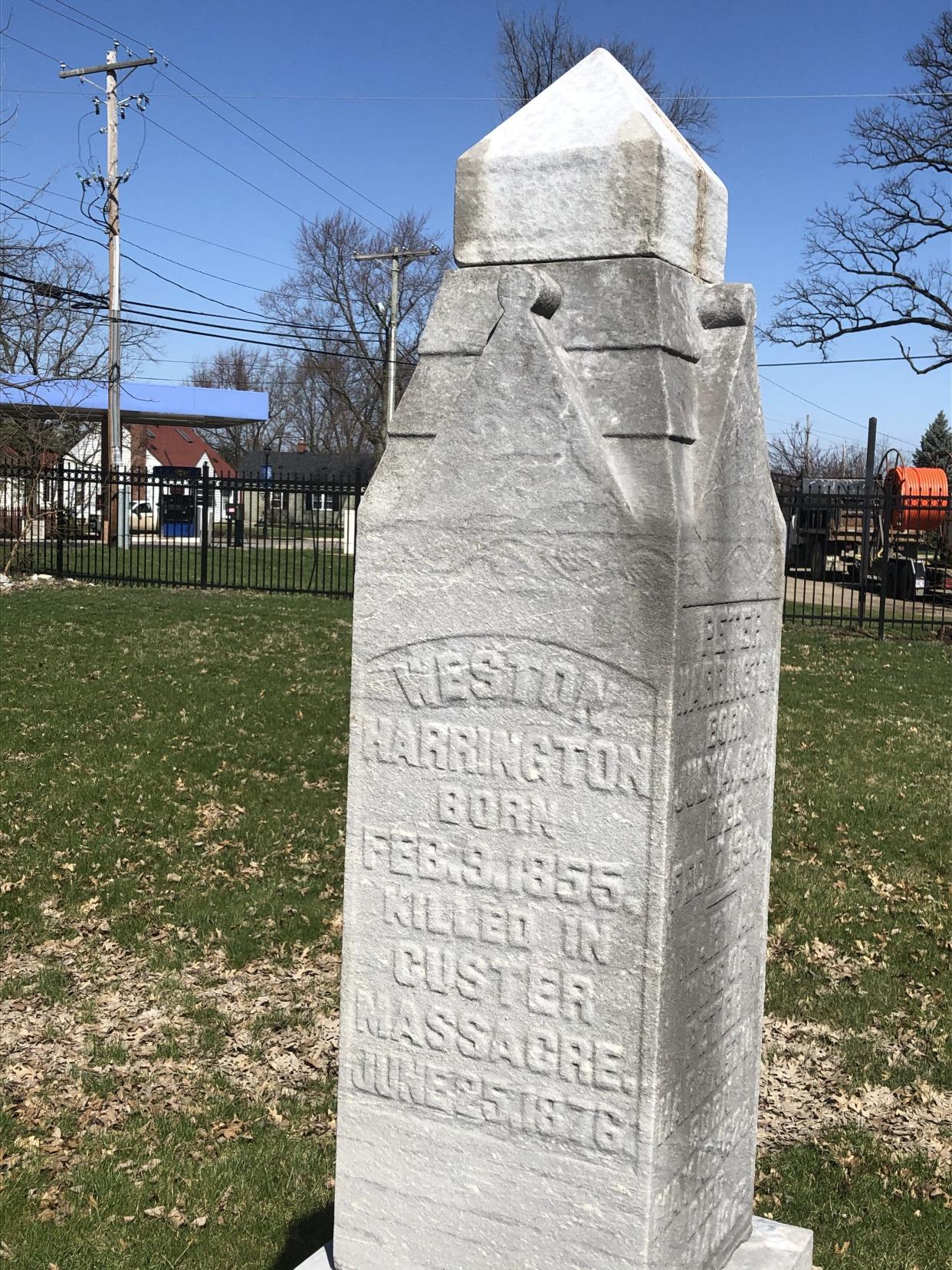Two Civil War soldiers killed in Custer's Last Stand are recognized at Weaver Park

The Hilliard Ohio Historical Society on Aug. 13 is to recognize the lives of two American Civil War soldiers who were killed in the Battle of Little Bighorn, better known as Custer’s Last Stand.
The men, Wesley Harrington and Miles O’Harra, are interred with the other soldiers of the 7th Calvary Regiment, all of whom were killed in battle June 25, 1876, near the battlefield in present-day Montana.
But tombstones representing the men’s lives stand at the historical village at Weaver Park, adjacent to the Franklin County Fairgrounds, 4100 Columbia Street.
At 10 a.m. Aug. 13, the Hilliard Ohio Historical Society is to dedicate the tombstones with an uncovering, the unveiling of a bronze marker describing the men’s lives and the Battle of Little Bighorn and a rendering of Taps as part of a memorial service by the honor guards of the William R. Schnug Memorial Post 614 and the Capt. Nicholas Rozanski Memorial VFW Post 4931.
The gravestone of Harrington was placed at Weaver Park in 2020 after Harrington’s descendants offered for it to be moved from Alton Cemetery to Weaver Park, after the family had replaced it with a new gravestone at Alton Cemetery.
While Harrington’s family had a tombstone placed in Alton Cemetery, O’Harra did not have a local tombstone, but one was made for him and is to be unveiled Aug. 13, according to Tim Woodruff, president of the Hilliard Ohio Historical Society.
The ceremony is to include an address from historian Eric Wittenberg, a practicing attorney in Columbus who also speaks publicly about the American Civil War, and from descendants of O’Harra and Harrington, Woodruff said.
O’Harra and Harrington are believed to have known each other in the village of Alton, just west of Hilliard, before each enlisted in the American Civil War together and were killed in the same battle, according to Woodruff.
The battle is commonly referred to as “Custer’s Last Stand,” as evidenced by a grave registration card provided by the Hilliard Ohio Historical Society that lists Harrington’s death place as “Custer Massacre.”
The battle was one of several during the Great Sioux War of 1876, also known as the Black Hills War, in which forces of several Native American tribes decisively defeated the army of Custer, who was killed in the battle.
Harrington, born Feb. 9, 1855, was the maternal great-great-uncle of 68-year-old Rusty Wilson, of Whitehall, a sports historian.
Wilson said Harrington’s involvement in one of the nation’s most famous military actions “always fascinates me.”
Harrington fibbed about his age to enlist and became a trooper in Custer’s 7th Cavalry Regiment, Wilson said.
Harrington was a carpenter but trained to fight the same as a trooper, Wilson said.
In his research, Wilson said he learned that Harrington’s body was not mutilated, as many others were, owing to the belief of some Native Americans that doing so would prevent their spirits from advancing, Wilson said.
A plausible explanation is that the Native Americans were aware that Harrington had previously assisted in the escape of a Lakota chief, Rain-in-the-Face, from an American fort in present-day North Dakota, and who was at the battle, and therefore, instead, covered Harrington’s body with a blanket, according to Wilson.
Following the Aug. 13 ceremony, the historical village and museum are to remain open for tours.
The event is free and open to the public.
kcorvo@thisweeknews.com
@ThisWeekCorvo
This article originally appeared on ThisWeek: Two Civil War soldiers killed in Custer's Last Stand are recognized at Weaver Park

